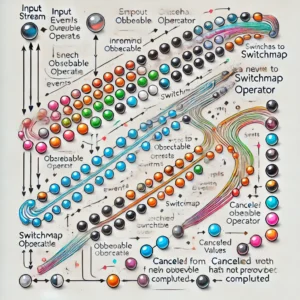Building RESTful APIs is an essential aspect of modern web development. RESTful APIs allow developers to create scalable and flexible web applications that can communicate with other systems and services. However, building a RESTful API that meets the needs of users and clients requires a deep understanding of the design principles and best practices that govern the development of RESTful APIs.
One of the key design principles of RESTful APIs is the use of resources. A resource is any object, data, or service that can be accessed by a client. Each resource has a unique identifier, which is typically a URI. By designing APIs around resources, developers can create APIs that are intuitive and easy to use. Another important design principle of RESTful APIs is the use of HTTP verbs to interact with resources. For example, GET requests are used to retrieve resources, while POST requests are used to create new resources.
To build a successful RESTful API, developers must also follow best practices. These include using consistent and descriptive naming conventions for resources and endpoints, providing clear and concise documentation, and ensuring the security and reliability of the API. By following these best practices, developers can create APIs that are easy to use, maintain, and scale.
Understanding RESTful APIs
RESTful APIs are designed around resources, which can be any kind of object, data, or service that can be accessed by the client. Each resource has a unique identifier, which is a URI that identifies that resource. For example, the URI for a particular customer order might be https://example.com/orders/123.
The REST architecture uses HTTP methods to perform operations on resources. The most common HTTP methods used in RESTful APIs are:
- GET: Retrieves a resource or a collection of resources.
- POST: Creates a new resource.
- PUT: Updates an existing resource.
- DELETE: Deletes a resource.
RESTful APIs also use HTTP status codes to indicate the success or failure of an operation. Some common HTTP status codes used in RESTful APIs are:
- 200 OK: The request was successful.
- 201 Created: The request was successful, and a new resource was created.
- 400 Bad Request: The request was invalid.
- 401 Unauthorized: The client is not authorized to access the resource.
- 404 Not Found: The requested resource was not found.
- 500 Internal Server Error: An error occurred on the server.
RESTful APIs should be designed to be stateless, meaning that each request should contain all the information necessary for the server to understand and process the request. This allows for better scalability and reliability, as the server does not need to maintain any client state.
In summary, RESTful APIs are designed around resources and use HTTP methods and status codes to perform operations on those resources. They should be designed to be stateless and include all the necessary information in each request.
Design Principles of RESTful APIs
RESTful APIs are designed around certain principles that help ensure they are scalable, maintainable, and easy to use. Here are some of the main design principles of RESTful APIs using HTTP:
Resource Identification
REST APIs are designed around resources, which are any kind of object, data, or service that can be accessed by the client. A resource has an identifier, which is a URI that uniquely identifies that resource. For example, the URI for a particular customer order might be:
https://api.example.com/orders/12345
Stateless Design
RESTful APIs are stateless, which means that each request from the client to the server must contain all of the information necessary to understand the request. This allows for better scalability and reliability, as the server does not need to keep track of any session state.
Client-Server Architecture
RESTful APIs are designed around a client-server architecture, which means that the client and server are separate and communicate through a standardized interface. This allows for better separation of concerns and more flexibility in how the API is used.
Cacheable Data
RESTful APIs are designed to be cacheable, which means that responses from the server can be cached by the client or any intermediate caches. This can improve performance and reduce the load on the server.
Layered System
RESTful APIs are designed to be a layered system, which means that each layer only interacts with the layer directly beneath it. This allows for more flexibility in how the API is implemented and can improve scalability and reliability.
Code on Demand
RESTful APIs can include code on demand, which means that the server can send executable code to the client to be executed on demand. This can be useful for implementing complex functionality on the client side without requiring the client to have all of the necessary code. However, this is an optional constraint and is not always necessary for a RESTful API.
Best Practices for Building RESTful APIs
When building RESTful APIs, it is important to follow best practices to ensure that they are easy to use, secure, and scalable. Here are some best practices for building RESTful APIs:
Use HTTP Methods Consistently
HTTP methods are used to interact with resources in a RESTful API. It is important to use them consistently to ensure that the API is easy to use and understand. Here are some best practices for using HTTP methods:
- Use GET to retrieve a resource
- Use POST to create a new resource
- Use PUT to update an existing resource
- Use DELETE to delete a resource
Leverage Status Codes
HTTP status codes are used to indicate the status of a request. They can be used to provide additional information about the request, such as whether it was successful or not. Here are some best practices for using status codes:
- Use 200 for successful requests
- Use 201 for successful POST requests that create a new resource
- Use 204 for successful DELETE requests that delete a resource
- Use 400 for bad requests
- Use 401 for unauthorized requests
- Use 404 for requests that cannot be found
- Use 500 for server errors
Error Handling
Error handling is an important part of building RESTful APIs. It is important to provide clear and concise error messages to help developers understand what went wrong. Here are some best practices for error handling:
- Use meaningful error messages
- Provide error codes to help developers debug issues
- Use HTTP status codes to indicate the type of error
- Include a description of the error in the response body
Versioning
Versioning is important for RESTful APIs because it allows developers to make changes to the API without breaking existing clients. Here are some best practices for versioning:
- Use version numbers in the API endpoint
- Use a header to specify the API version
- Avoid breaking changes in minor version updates
- Document changes to the API in a changelog
Security
Security is an important consideration when building RESTful APIs. It is important to protect sensitive data and prevent unauthorized access. Here are some best practices for security:
- Use HTTPS to encrypt data in transit
- Use authentication to verify the identity of the user
- Use authorization to control access to resources
- Use OAuth 2.0 for third-party authentication and authorization
By following these best practices, developers can build RESTful APIs that are easy to use, secure, and scalable.
Testing RESTful APIs
Testing is an essential part of building RESTful APIs. It helps to ensure that the API is functioning correctly and meets the requirements of the users. Testing can be done at different levels, including unit testing and integration testing.
Unit Testing
Unit testing is a testing technique that involves testing individual units or components of the API in isolation. The purpose of unit testing is to ensure that each unit of the API is working correctly and meets the requirements of the specification.
Unit testing can be done using a variety of tools and frameworks, such as JUnit, NUnit, and PHPUnit. These tools provide a framework for writing and executing unit tests, and they can also generate reports that provide feedback on the performance of the tests.
When writing unit tests, it is important to ensure that the tests cover all possible scenarios and edge cases. This includes testing the API with different inputs and ensuring that the API returns the correct response for each input.
Integration Testing
Integration testing is a testing technique that involves testing the API as a whole, including all its components and dependencies. The purpose of integration testing is to ensure that the API works correctly in a real-world environment and meets the requirements of the users.
Integration testing can be done using tools and frameworks such as Postman, SoapUI, and RestAssured. These tools provide a framework for writing and executing integration tests, and they can also generate reports that provide feedback on the performance of the tests.
When writing integration tests, it is important to ensure that the tests cover all possible scenarios and edge cases. This includes testing the API with different inputs and ensuring that the API returns the correct response for each input. It is also important to test the API with different load levels to ensure that it can handle the expected traffic.
In conclusion, testing is an essential part of building RESTful APIs. It helps to ensure that the API is functioning correctly and meets the requirements of the users. Unit testing and integration testing are two important techniques that can be used to test RESTful APIs. When writing tests, it is important to ensure that all possible scenarios and edge cases are covered, and that the API works correctly in a real-world environment.
Deploying and Maintaining RESTful APIs
Deploying and maintaining a RESTful API is an essential part of the development process. It involves ensuring that the API is available, secure, and performing optimally at all times. In this section, we will discuss some best practices for deploying and maintaining RESTful APIs.
Continuous Integration and Deployment
Continuous integration and deployment (CI/CD) is a process that involves automating the build, testing, and deployment of software. It is an essential part of the development process, and it can help ensure that the API is always available and up-to-date.
To implement CI/CD for a RESTful API, developers can use tools like Jenkins, Travis CI, or CircleCI. These tools can be used to automate the build, testing, and deployment process, which can help reduce errors and ensure that the API is always available.
Monitoring and Logging
Monitoring and logging are critical aspects of maintaining a RESTful API. It involves tracking the API’s performance, identifying errors, and ensuring that the API is always available.
Developers can use tools like New Relic, Datadog, or Splunk to monitor and log their RESTful API. These tools can help track the API’s performance, identify errors, and provide real-time alerts when issues arise.
Usage of RESTful APIs
Here are various ways RESTful APIs can be used in software development:
Web Applications: One of the most common use cases is building web applications that interact with a server via RESTful APIs. These APIs enable the client-side of the application to request and manipulate data from the server without requiring a full page reload.
Mobile Applications: RESTful APIs are widely used in mobile app development to enable communication between the app and the server. Mobile apps can request data, send updates, and interact with the backend using API endpoints.
IoT (Internet of Things): RESTful APIs are used to facilitate communication between IoT devices and backend servers. IoT devices can send data to the server, and the server can send commands or updates to the devices using API requests.
Third-Party Integrations: Many software systems need to integrate with third-party services or platforms. RESTful APIs provide a standardized way for different applications to interact with each other. For example, integrating payment gateways, social media platforms, or external data sources.
Microservices Communication: In a microservices architecture, different services communicate with each other through APIs. RESTful APIs can be used to facilitate communication and data exchange between microservices in a decentralized system.
Content Management Systems (CMS): CMS platforms often expose RESTful APIs to allow developers to retrieve, create, update, and delete content programmatically. This enables automation and integration with other systems.
Data Analytics and Visualization: RESTful APIs can be used to access and retrieve data from databases or data warehouses, allowing developers to build custom analytics dashboards and visualizations.
Authentication and Authorization: APIs can be used to handle user authentication and authorization. For example, user login and session management can be implemented using RESTful API endpoints.
File and Media Storage: RESTful APIs can be used to upload, retrieve, and manage files and media assets on remote servers. This is common in applications that involve user-generated content.
Real-time Applications: While not traditionally the best fit for real-time applications due to their statelessness, RESTful APIs can still be used to implement real-time features using techniques like long polling or WebSockets.
E-commerce Platforms: RESTful APIs play a crucial role in e-commerce applications by allowing users to search for products, manage their shopping carts, place orders, and track shipments.
Geolocation and Mapping Services: Applications that require geolocation data or mapping services often use RESTful APIs to access location-based information.
Search Functionality: RESTful APIs can power search functionality within applications by allowing users to query and retrieve relevant data from a backend system.
Machine Learning and AI: APIs can be used to integrate machine learning models and AI services into applications. This enables developers to add intelligent features without needing to build the underlying models.
These are just a few examples of how RESTful APIs can be used in software development. The flexibility, simplicity, and widespread adoption of the REST architectural style make it a popular choice for designing APIs that enable communication between various components of modern software systems.
API Documentation
API documentation is an essential part of maintaining a RESTful API. It involves providing clear documentation that outlines the API’s functionality, endpoints, and parameters.
Developers can use tools like Swagger, Postman, or Apiary to create API documentation. These tools can help ensure that the API’s documentation is clear, concise, and up-to-date.
In summary, deploying and maintaining a RESTful API involves implementing continuous integration and deployment, monitoring and logging the API’s performance, and providing clear API documentation. By following these best practices, developers can ensure that their RESTful API is always available, secure, and performing optimally.
Conclusion
To conclude, building a robust and effective RESTful API demands more than just slapping together a few endpoints. It requires thoughtful planning, adherence to well-established design principles, and a deep understanding of how data should be organized, accessed, and manipulated over the web. A well-designed RESTful API can drive the success of your application, ensuring that it not only meets your current needs but also evolves gracefully as your project grows.
In this article, I tried to delve into the world of RESTful API design, exploring the fundamental principles and best practices that guide the creation of APIs that are not only functional but also user-friendly and maintainable. Whether you’re a seasoned developer seeking a refresher or a newcomer looking to grasp the essentials, our journey through RESTful API design principles will equip you with the knowledge and skills to architect APIs that stand the test of time.
For further leaning please visit below links to know more:
What is RESTful API? by AWS
RESTful API by RedHat






